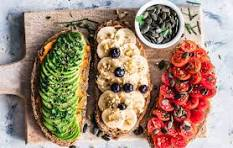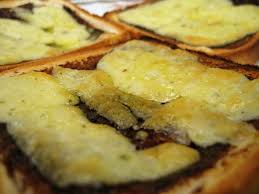Plant-Based Diet for Beginners: Get Started Now

Embarking on a plant-based diet can be both exciting and daunting. For beginners, the transition might seem overwhelming, but with the right guidance and motivation, it can lead to a healthier, more sustainable lifestyle. This comprehensive guide will provide you with the necessary tools and information to get started on your vegan journey.
Understanding a Plant-Based Diet
A vegetable-only diet focuses on foods primarily from plants. This includes not only fruits and vegetables but also nuts, seeds, oils, whole grains, legumes, and beans. It doesn’t mean that you are vegetarian or vegan and never eat meat or dairy. Rather, you are proportionately choosing more of your foods from plant sources.
Benefits of a Plant-Based Diet
Health Benefits: From Heart Health to Weight Loss
A plant-based diet is rich in nutrients and low in unhealthy fats. Research shows that it can reduce the risk of heart disease, lower blood pressure, and help manage diabetes. Additionally, many people find that they lose weight more easily on a plant-based diet due to the high fiber content and lower calorie density of plant foods.
Environmental Impact: Reducing Your Carbon Footprint
Choosing this type of diet is not only beneficial for your health but also for the planet. Animal agriculture is a significant contributor to greenhouse gas emissions, deforestation, and water usage. By reducing your consumption of animal products, you can significantly lower your carbon footprint and contribute to a more sustainable world.
Ethical Considerations: Animal Welfare
For many, the ethical treatment of animals is a compelling reason to adopt a plant-based diet. Factory farming practices often involve significant animal suffering. By choosing vegetable-only options, you can reduce the demand for these practices and support more humane and sustainable farming methods.
Getting Started with a Plant-Based Diet
Assessing Your Current Diet
Begin by taking a close look at your current eating habits. Identify which meals and snacks are already vegan and which ones rely heavily on animal products. This will give you a baseline from which to start making gradual changes.
Setting Realistic Goals
Set achievable goals for your transition to a this diet. This might include starting with one plant-based meal per day or having meat-free days each week. Gradually increasing your plant-based intake will make the transition smoother and more sustainable.
Essential Nutrients in a Plant-Based Diet
Protein Sources: Beyond Tofu and Tempeh
Protein is essential, but there are many vegetable sources beyond tofu and tempeh. Lentils, chickpeas, black beans, quinoa, and nuts are all excellent sources of protein. Incorporate a variety of these foods to ensure you’re getting all the essential amino acids.
Iron and Calcium
Iron and calcium are crucial nutrients that can be found in plant foods. Spinach, lentils, chickpeas, and quinoa are rich in iron. For calcium, look to fortified plant milks, tofu, almonds, and leafy greens like kale and broccoli.
Vitamin B12 and Omega-3 Fatty Acids
Vitamin B12 is not naturally found in plant foods, so it’s important to take a supplement or consume fortified foods. Omega-3 fatty acids, which are important for brain health, can be found in flaxseeds, chia seeds, walnuts, and hemp seeds.
Planning Your Meals
Meal Planning Tips for Beginners
Start by planning your meals for the week. Choose simple recipes that you can prepare in bulk. Having a plan will help you stay on track and make grocery shopping easier.
Creating a Balanced Plate
Ensure your meals are balanced by including a variety of food groups. Aim for half your plate to be vegetables and fruits, a quarter whole grains, and a quarter protein sources. Adding healthy fats from nuts, seeds, or avocados will complete your meal.
Essential Kitchen Tools for a Vegan
Having the right tools can make plant-based cooking more enjoyable. Consider investing in a good blender, food processor, and sharp knives. These tools will help you prepare smoothies, soups, sauces, and other dishes with ease.
Stocking Your Pantry with Plant-Based Essentials
Grocery Shopping Tips
Create a shopping list of these essentials. Stock up on whole grains, legumes, nuts, seeds, and a variety of fresh and frozen vegetables and fruits. This will ensure you always have the ingredients you need for healthy meals.
Reading Labels: Hidden Animal Products to Avoid
Many processed foods contain hidden animal products. Learn to read labels and look for ingredients like gelatin, casein, and whey. Go for products labeled as vegan or plant-based to avoid these hidden ingredients.
Batch Cooking and Meal Prep Ideas
Breakfast: Kickstart Your Day
Start your day with a nutritious plant-based breakfast. Overnight oats, chia pudding, and avocado toast are quick and easy options. Preparing these in advance can save time in the morning.
Quick and Easy Breakfast Ideas
Smoothie bowls, vegan pancakes, and scrambled tofu are delicious and filling breakfast choices. Experiment with different ingredients to keep things interesting and satisfying.
Smoothie Recipes for Beginners
Smoothies are a great way to pack in nutrients. Try blending spinach, frozen berries, a banana, and plant milk for a quick and nutritious breakfast. Adding a scoop of protein powder can make it more filling.
Lunch: Energize Your Afternoon
Simple and Satisfying Lunch Recipes
Salads, grain bowls, and wraps are excellent plant-based lunch options. Load them with vegetables, beans, and whole grains for a balanced meal. Hummus, guacamole, and tahini dressings add flavor and healthy fats.
Packable Lunch Ideas for Work or School
Mason jar salads, quinoa salads, and veggie wraps are easy to pack and take on the go. Prepare them the night before to save time in the morning.
Dinner: End Your Day Right
Hearty and Delicious Plant Based Dinner Recipes
For dinner, try hearty dishes like lentil stew, vegetable curry, and stuffed bell peppers. These meals are satisfying and can be made in large batches for leftovers.
One-Pot Meals for Easy Cleanup
One-pot meals like chili, stir-fries, and pasta dishes simplify cooking and cleanup. They are perfect for busy weeknights and can be easily customized with your favorite vegetables and proteins.
Snacks and Desserts
Healthy Snacks to Keep You Going
Keep your energy levels up with healthy snacks like nuts, seeds, fruit, and hummus with vegetables. These snacks are convenient and nutrient-dense.
Indulgent Desserts
Indulge in delicious plant-based desserts like chocolate avocado mousse, coconut milk ice cream, and baked apples. These treats satisfy your sweet tooth without compromising your diet.
Tips for Finding Plant Based Options at Restaurants
When dining out, research restaurants that offer these options. Most places can accommodate dietary preferences, so don’t hesitate to ask for modifications to make your meal.
What to Do When There Are No Plant-Based Choices
If you find yourself at a restaurant with no options for vegetable-only, look for simple solutions. Order a salad without meat, ask for vegetable sides, or see if the chef can create something off-menu.
Navigating Family Gatherings and Parties
Family gatherings and parties can be challenging. Offer to bring a plant-based dish to share. This ensures you have something to eat and introduces others to delicious plant-based food.
Dealing with Skeptical Friends and Family
Not everyone will understand your dietary choices. Be patient and explain your reasons calmly. Share delicious vegan meals with them to show how enjoyable this lifestyle can be.
Staying Motivated and Inspired
Finding Support: Online Communities and Resources
Join online communities and forums for plant-based eaters. These groups offer support, recipes, and motivation. Knowing others are on the same journey can be incredibly encouraging.
Following Plant-Based Influencers and Bloggers
Follow these influencers and bloggers for inspiration. They often share recipes, tips, and personal stories that can keep you motivated and excited about your diet.
QUICK RECIPE FOR CREAMY VEGAN MUSHROOM STROGANOFF (A highly delightful Russian plant based meal)

Ingredients:
- 2 tbsp olive oil
- 1 medium onion, finely chopped
- 3 cloves garlic, minced
- 1 lb (450g) mushrooms, sliced (a mix of cremini, shiitake, and button mushrooms works well)
- 1 tsp dried thyme
- 1 tsp dried rosemary
- Salt and pepper to taste
- 2 tbsp all-purpose flour
- 1 cup vegetable broth
- 1 cup full-fat coconut milk
- 2 tbsp nutritional yeast
- 1 tbsp Dijon mustard
- 1 tbsp soy sauce or tamari
- 1 tbsp lemon juice
- 8 oz (225g) pasta (fettuccine or egg-free noodles)
- Fresh parsley, chopped (for garnish)
Instructions:
- Cook the Pasta:
- Bring a large pot of salted water to a boil. Cook the pasta according to the package instructions until al dente. Drain and set aside.
- Sauté the Aromatics:
- In a large skillet, heat the olive oil over medium heat. Add the chopped onion and sauté for about 5 minutes until it becomes translucent.
- Add the minced garlic and cook for another 1-2 minutes until fragrant.
- Cook the Mushrooms:
- Add the sliced mushrooms to the skillet. Cook for about 10 minutes, stirring occasionally, until the mushrooms release their moisture and start to brown.
- Season with dried thyme, dried rosemary, salt, and pepper.
- Make the Sauce:
- Sprinkle the flour over the mushrooms and stir well to combine. Cook for 1-2 minutes to get rid of the raw flour taste.
- Gradually pour in the vegetable broth, stirring constantly to avoid lumps.
- Add the coconut milk, nutritional yeast, Dijon mustard, soy sauce or tamari, and lemon juice. Stir to combine.
- Let the sauce simmer for about 5-7 minutes, until it thickens.
- Combine and Serve:
- Add the cooked pasta to the skillet and toss to coat in the sauce. Cook for another 2-3 minutes to heat through.
- Taste and adjust seasoning with more salt, pepper, or lemon juice if needed.
- Garnish and Enjoy:
- Serve the mushroom stroganoff hot, garnished with freshly chopped parsley.
Notes:
- For a gluten-free option, use gluten-free pasta and substitute the all-purpose flour with a gluten-free flour blend.
- If you prefer a lighter sauce, you can use a plant-based milk like almond or oat milk instead of coconut milk, but the sauce will be less creamy.
This creamy vegan mushroom stroganoff is perfect for a comforting dinner and can be enjoyed by both vegans and meat-eaters alike. The combination of mushrooms, herbs, and a rich, creamy sauce creates a satisfying and flavorful meal.
Conclusion
Transitioning to a plant-based diet is a journey. Reflect on your progress and celebrate your successes. Remember that it’s okay to make mistakes and that each step forward is an achievement.
Encouragement to Continue Exploring
Stay curious and keep exploring new foods and recipes. This lifestyle offers endless possibilities for delicious and healthy eating. Your journey is unique, and each day is an opportunity to learn and grow.
Additional Resources for Further Learning
Seek out additional resources such as books, documentaries, and cooking classes. These can deepen your understanding and help you stay informed and inspired on your journey.








